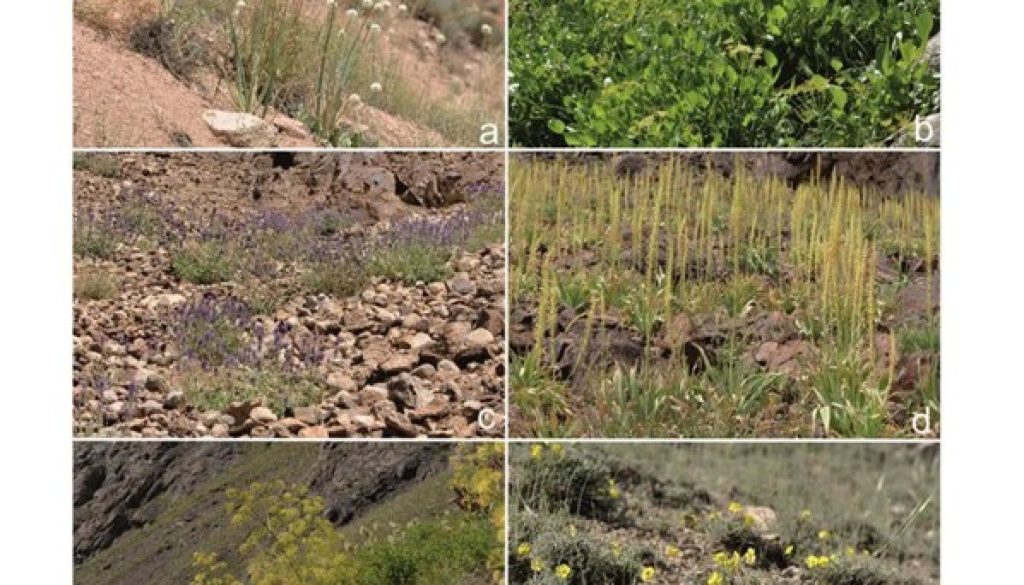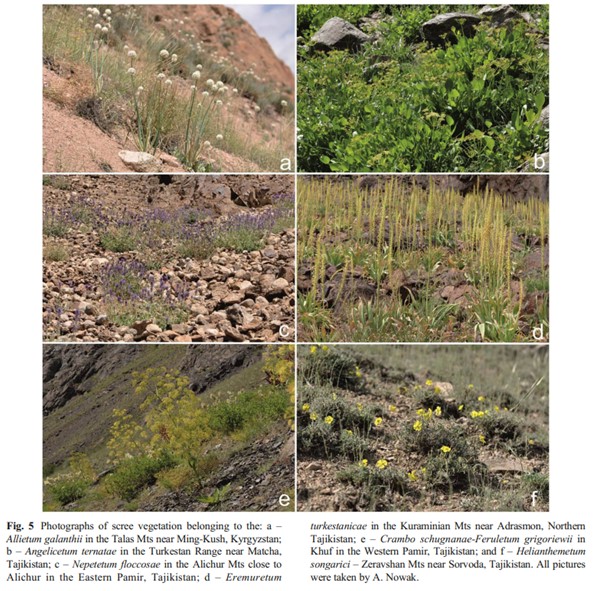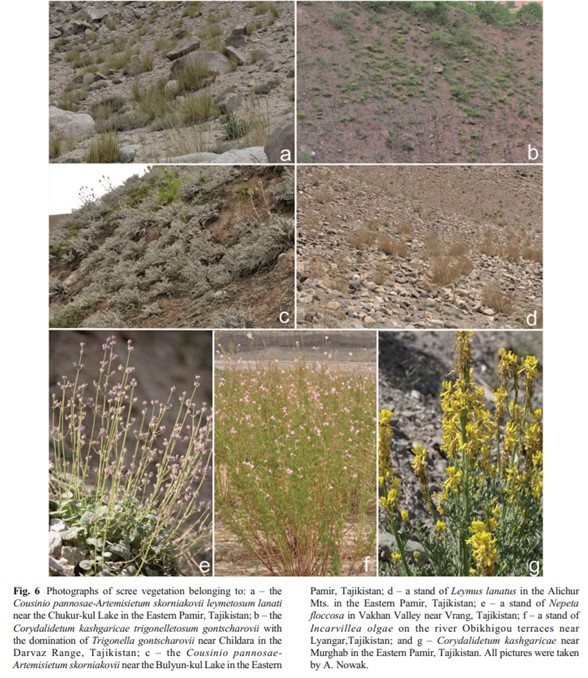W pracy przedstawiono wyniki badań fitosocjologicznych roślinności piargowej Pamiru i południowo-zachodniego Tienszanu. Na podstawie 222 zdjęć fitosocjologicznych zidentyfikowaliśmy 21 zbiorowisk roślinnych na ruchomych i stabilnych piargach w górach Piotra I, Aliczurskich, Szugnańskich, Szachdariańskich, Darwazkich, Ruszańskich, Wancz, Fergańskich, Kirgizkich i Terskej Alatoo. Głównymi czynnikami determinującymi skład gatunkowy badanych zespołów jest mobilność piargów, rozmiar kamieni i skał je tworzących, wysokość nad poziomem morza oraz nachylenie stoków. Podkreśliliśmy wysoki stopień endemizmu siedlisk chasmofitycznych we wschodniej części Azji Środkowej, który w znacznym stopniu wpływa na klasyfikację roślinności piargowej.
Abstract: This paper presents the results of phytosociological research on scree vegetation of the Pamir and south-western Tian Shan. We collected 222 phytosociological relevés during field studies conducted in 2015–2019, applying the Braun-Blanquet approach. We identified 21 plant communities on mobile and stabilized screes of colluvial cones, aprons and fans, inhabiting mainly the montane and alpine belts in several ranges (e.g. Peter the First, Alichur, Shugnan, Shachdarian, Darvaz, Rushan, Vanch, Fergana, Kyrgyz and Terskey ranges). As a result we provide the first comprehensive hierarchical syntaxonomic synopsis of scree communities at montane and alpine elevations in the eastern Middle Asia. The collected vegetation relevés represent the majority of the variation among the phytocoenoses of gravel, pebble, cobble and rock block slides and screes in the montane and alpine belts. As a result of field studies and Twinspan analyses, nine associations were identified on screes of the Pamir and western Tian Shan. All these communities were assigned to the Sileno brahuicae-Lactucetalia orientalis Nowak et al. 2021. Additionally, within the nitrophilous compact gravel screes one subassociation of Corydalidetum kashgaricae trigonelletosum gontscharovii was distinguished. In the most arid zone two additional plant associations and one subassociation were identified in gravelly semi-deserts zone. The main factors determining the species composition of the studied associations are scree mobility, rock particle size, elevation above sea level and slope inclination. Our research revealed considerable diversity of scree habitats of montane and alpine belts what might be astonishing regarding harsh environment of this mountainous territory. However, a great number of lineages that evolved here and particularly rich species pool of this habitat in Middle Asia facilitate remarkable diversity among vegetation of taluses and screes. The distinctiveness of species composition is additionally enhanced by high degree of endemism of chasmophytic habitats in the eastern part of Middle Asia. Despite recent developments, the prominent chasmophytic vegetation of Middle Asia still needs thorough studies focused on its relationship to semi-desert, tall-forb and petrophytic communities of high mountains of the Pamir, Hindu-Kush, Kunlun and Central Tian Shan.
Nowak A., Świerszcz S., Nowak S. & Nobis M. 2021. Vegetation Diversity of Screes and Taluses of The Pamir and South-Western Tian Shan in Middle Asia. Folia Geobotanica 56, 43–67. doi.org/10.1007/s12224-021-09392-w



